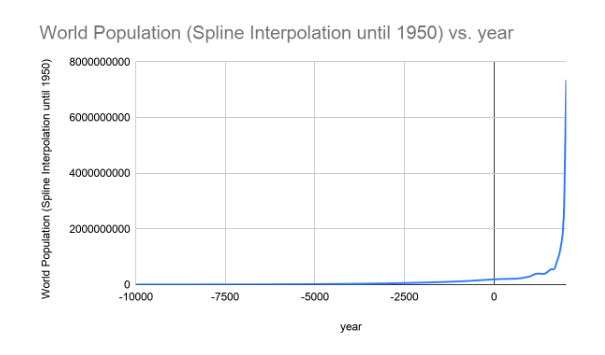As a group of 9 undergraduate students in the department of Earth, Ocean, and Atmospheric Sciences (EOAS), we are all thrilled to be part of an amazing project that will be presented in the Spring of 2020: The Earth Symphony. This project is a collaboration between students and faculty with backgrounds in music, science, and journalism with the intent on celebrating the 50th anniversary of Earth Day and raising awareness about the major anthropogenic effects that have been inflicted on the Earth in that time span. The group of students that I am part of is responsible for finding Earth-system datasets and communicating the information to the other groups working on this project. This data will be sonified (which means the numerical values will be transformed into music) and eventually presented as a symphony.
For the first week of data collection, our group of 9 students split into 3 groups to tackle major areas of earth systems: ‘Land’, ‘Air’, and ‘Oceans’. As a member of the ‘Land’ group, we tackled a large variety of data ranging from lithospheric data to ecological disturbances to human economic interactions. It was a broad category that encompassed many of the consequences from humans processes, but also information regarding consequences on humans themselves, such as economic changes and health impacts.
Personally, I focused largely on the human-centric aspects of Earth systems. One of the main datasets I focused on for this task was human population over time. This data, when graphed, shows an incredibly stark increase in the last several centuries:

Figure 1: World population is represented on the y-axis, while the time in years is represented on the x-axis. This data spans more than 12,000 years. This data was obtained from HYDE (the History Database of the Global Environment), which used census data since the year 1950 and used extrapolation techniques to estimate the world population prior to then.
While it is not necessarily reflective of the last 50 years and the anthropogenic effects that humans have had on the environment within that time, it is an important dataset that reflects how quickly human development has proceeded recently. The enormous human population is directly related to how quickly we have been consuming our finite resources, and thus how quickly humans are causing destruction to various environmental systems. It is a baseline dataset that helps to recognize how humans continuously push the boundaries of the planet’s carrying capacity in order to continuously grow and develop in every facet of society.
Aside from the direct data of the human population, several datasets were also found that directly reflect how humans are impacting the lithosphere and biosphere.

Figure 2: The total land area burned in Canada (in hectares) is represented on the y-axis, with the years between 1983 and 2019 represented on the x-axis. This data shows a general upward trend of the total area burned as time passes, but data is generally noisy with outliers on both ends. Data was collected from aviation measurements from the Canadian Forest Service.
The dataset regarding forest fires and land area burned can be correlated with a variety of anthropogenic effects that have increased over the time period. From increasing atmospheric temperatures to increasing population to increased amounts of infrastructure, there are a multitude of layers to these effects. Regardless, it is observed that the area burned is generally increasing. It would also be interesting to compare this data to the number of separate fire events. Forest fires are an incredibly important type of disturbance to ecological communities within Canada, and some species may only reproduce with the high amounts of heat given off from fires.
Other datasets that were explored within the ‘Land’ group pertain to global biodiversity, agricultural land changes, global oil production, and frequency of natural disasters, to name a few. It was fascinating to see the enormous variety of datasets that were obtained from the group, and it is shocking to see how humans have affected so many aspects of the natural world through anthropogenic impacts such as fossil fuel burning, deforestation, pollution, and more. Despite the way this project can be emotionally draining and bring out pessimistic attitudes within the group, it is engaging to see how far-reaching environmental science is within our societies and the natural world. I am looking forward to continue exploring these effects as this project continues, and am looking forward to see how the symphony takes shape from the baseline that we’ve created for it.